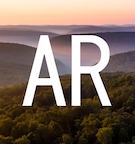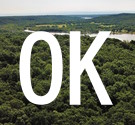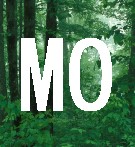Geographical Index > United States > Massachusetts > Bristol County > Report # 25364
(Class B)
Submitted by witness on Tuesday, January 27, 2009.
Federal law enforcement agent describes possible snow tracks on private land adjacent to Pakamansett River @ 10 miles from Hockomock Swamp (w/ Photos)
(Show Printer-friendly Version)
YEAR: 2009
SEASON: Winter MONTH: January DATE: 1/25/2009 STATE: Massachusetts COUNTY: Bristol County NEAREST TOWN: North Dartmouth, MA NEAREST ROAD: State Road Rt. 6 OBSERVED: Footprints in the snow, walking through several properties and into the woods. Seen by myself, a Federal Agent for 16 years, my cousin the homeowner/property owner), and several other family members. Tracks went through a neighborhood and from trash can to trash can. ALSO NOTICED: The toes of the footprints penetrated under the snow about an inch, indicating the track was made by a foot with a forward momentum walking up the hill. OTHER WITNESSES: Several family members. The prints were first discovered by my cousin's daughter in their back yard. She had heard bigfoot stories from me because I am a hobby cryptozoologist. She showed them to her dad and he called me and several other family members. Several pictures were taken by my cousin and myself. OTHER STORIES: About 30 years ago I had an experience in Westport, MA when I thought I saw a bigfoot going after a family dog. Westport is a nearby town. TIME AND CONDITIONS: Daylight, Bright sun. The tracks were possibly made on Saturday the 24th at night. My cousin noted his outdoor cats were inside and acting very frightened. ENVIRONMENT: Suburban backyard surrounded by extensive natural areas. Several of the kids have been through the yard because they are excited about the tracks, but we have tried to preserve them.
Follow-up investigation report by BFRO Investigator D.A. Brake (PhD):
I phone interviewed the witness who submitted the report and separately phone interviewed the homeowner (witness’s cousin) on whose property the snow track occurred. A follow-up site interview 8 weeks after the incident was conducted with the witness on the homeowner’s property, as well as a daytime scouting of a nearby watershed. Below is additional information collected from the phone and site interviews and investigation of the watershed.
The incident occurred in a residential cul-de-sac neighborhood. The homeowner reported that is had snowed approximately 36 hours earlier (Friday night) and on Saturday evening he went out on his back deck at approximately 11:30 pm. He stated that the family’s 3 cats that typically stay out all night were by the deck door exhibiting behavior indicating that they wanted to go inside. The homeowner let the cats in and stayed outside a few minutes longer. No unusual sounds or smells were noted.
The homeowner’s young daughter discovered the snow tracks the following morning (Sunday) and he went into his backyard a short time later and observed two sets of unusual looking tracks that traversed his yard. Numerous fresh deer tracks were also observed and upon questioning the homeowner mentioned that January is the most active month of the year for seeing deer moving through his backyard. The homeowner stated that one set of prints was distinctly smaller compared to the other set. Both set of snow tracks originated from a neighbor’s yard which is immediately adjacent to a small road. The homeowner observed one set of tracks led to his approximately 4 ½ foot tall garbage can. Several of the plastic bags in the can had been pulled out and torn open. The same set of tracks continued on for approximately 20 yards into the neighbor’s driveway on the other side of his house. The homeowner stated that he was still having difficulty believing the snow tracks may be real and remained skeptical of the existence of large bipedal creatures. The homeowner took 3 photos which were subsequently submitted by the witness. One of the homeowners’ photos shows a clear right foot print with four distinct, large toes. The print has a very deep impression and is significantly larger in length and width than the homeowner’s size 10 shoe shown along side the print as a reference.
The witness went to the homeowner’s property the following day. He followed the larger set of snow tracks several yards into a small patch of long grass exposed from melted snow. The witness submitted several digital photos that had some evidence of track degradation compared to the homeowners’ photos taken 24 hours earlier. One of the witness’s photos shows a clear four-toed right print and a second photo shows two complete strides of significantly deeper impression in the snow compared to numerous human made snow tracks seen in the same photo. A third photo showed a possible impression in the long grass at the point where the tracks ended. The witness did not conduct footprint size or snow track stride or straddle measurements.
Scouting of the surrounding area with the witness revealed a possible access point to the cul-de-sac neighborhood from an open field farm located approximately 0.5 miles away. The back of the farm is adjacent to the Paskamansett River, a large relatively dense swampy watershed that originates approximately 5 miles to the north at Turner’s Pond and flows an additional 5 miles into Slocum River which flows into Buzzard Bay. Photos of a possible large animal bedding area comprised of twisted and broken pine branches of various sizes with pine needle flooring was observed near the river.
Turner’s Pond is located approximately 15 miles south of Hockomock Swamp, a 6,000 acre uninhabited wetland within the ‘Bridgewater Triangle”. Hockomock Swamp is the second largest wetland in Massachusetts and contains abundant wildlife. Hockomock is a Native American name meaning “Place Where Spirits Dwell” and this area and the Bridgewater Triangle have had reports of paranormal events for centuries. Further scouting with the witness in Freetown-Fall River State Forest (western point of the Bridgewater Triangle), was also conducted. Class B report #8972 is from this general area and locals refer to the “Hockomock Monster” based on several reports from the 1970’s that describe a hairy 6-7 foot tall bipedal animal.
The report and photos are interesting as the incident occurred in the backyards of a residual neighborhood. It is possible that the snow tracks observed were from 2 bipedal large animals that mainly inhabit the Hockomock Swamp area and were following the known southerly winter migration of the deer population toward the warmer coastal areas. Southeastern Massachusetts has a large density deer population that is equivalent to that of the significantly less populous, mountainous areas of Western Massachusetts (Berskhires). Future scouting and investigation of the Freetown-Fall River State Forest, Hockomock Swamp and other areas of the Bridgewater Triangle are planned.
Here are three of the better photos:
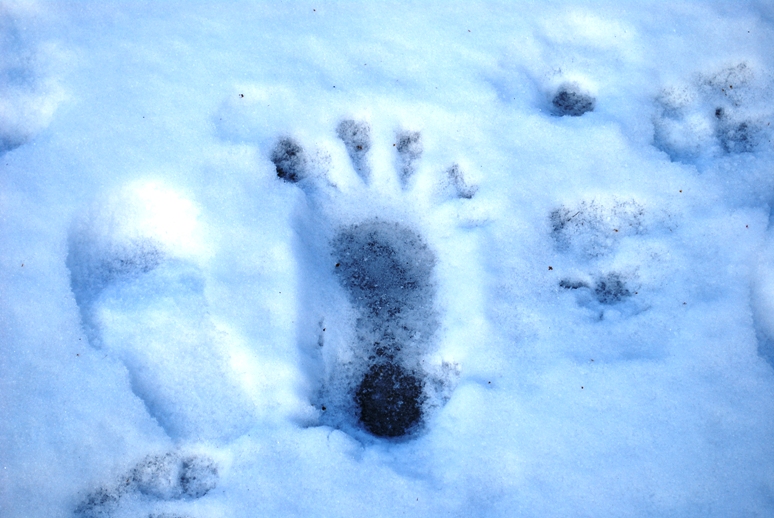
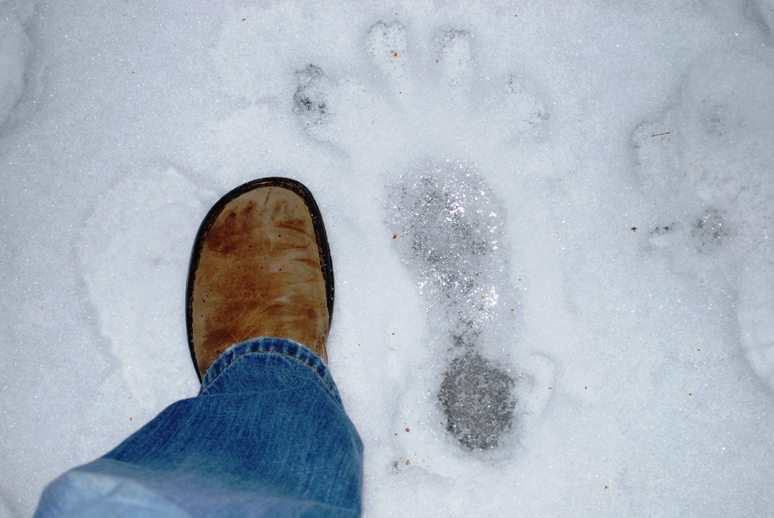
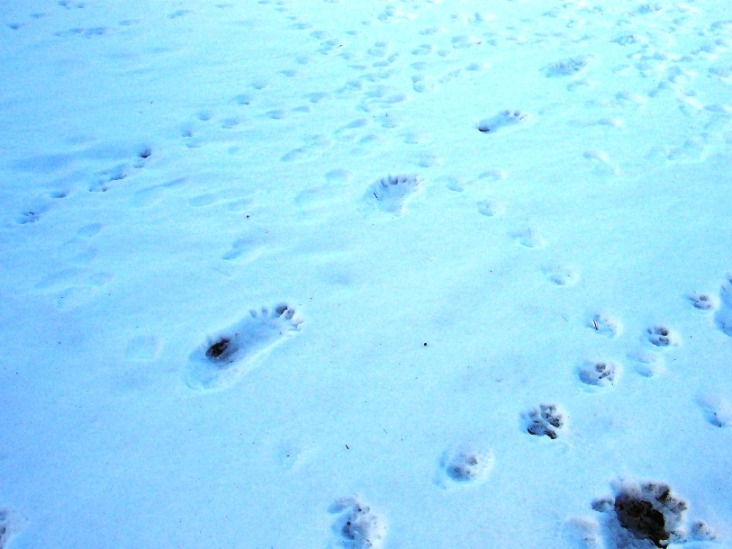
About BFRO Investigator D.A. Brake (PhD):
D. Brake holds a PhD in Immunology and attended the Maine 2008 expedition.
| 



